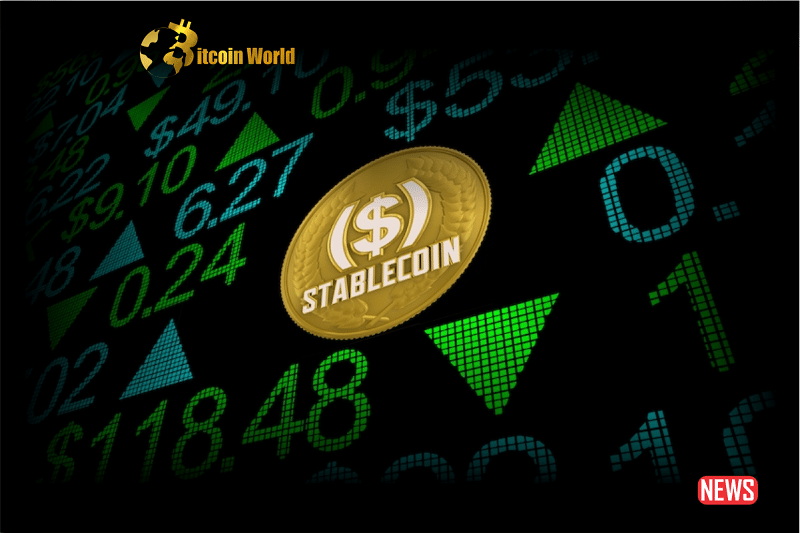Get ready for a potential game-changer in the world of digital finance! Circle, the powerhouse behind the popular USDC stablecoin, is seriously considering launching a stablecoin in Japan. This exciting prospect comes hot on the heels of Japan’s groundbreaking legislation governing stablecoins, which went into effect on June 1st. Could this be the start of a new chapter for cross-border transactions and global commerce?
Why Japan? Circle’s Vision for a Stablecoin Hub
Jeremy Allaire, Circle’s co-founder and CEO, didn’t mince words in a recent interview with CoinDesk Japan. He sees Japan as a potentially “immensely significant market” for stablecoins. Why the enthusiasm? Allaire believes that widespread adoption of stablecoins in Japan could revolutionize:
- Cross-border Trade: Imagine seamless and efficient international transactions.
- Foreign Currency Transactions: Say goodbye to hefty exchange fees and complex processes.
- Global Commerce: Facilitating smoother and faster global trade.
Allaire lauded Japan’s proactive approach, calling the new stablecoin bill “the most important thing the government and the Financial Services Agency have done.” It’s clear that Circle sees Japan as a forward-thinking nation ready to embrace the potential of stablecoins.
Japan’s Pioneering Stablecoin Legislation: A Closer Look
What makes Japan’s new legislation so significant? Essentially, it positions the country as a frontrunner in establishing clear rules for using stablecoins issued both domestically and internationally. Think of it as laying down the groundwork for a safer and more regulated stablecoin ecosystem.
Here’s a breakdown of the key aspects of Japan’s stablecoin framework:
- Classification: Stablecoins backed by legal tender are now classified as an “electronic payment method.”
- Issuance Permitted: The legislation opens the door for the issuance of stablecoins.
- Stringent Regulations: However, it’s not a free-for-all. Issuers must adhere to strict rules, including:
- Pegging the stablecoin’s value to the yen or another legal tender.
- Guaranteeing holders the right to redeem their stablecoins at face value.
- Eligible Issuers: Only licensed financial institutions like banks, registered money transfer agents, and trust companies can issue stablecoins. This ensures a level of security and accountability.
Circle’s Next Steps in Japan: Partnerships and Possibilities
Circle isn’t just observing from the sidelines. Allaire’s recent visit to Japan underscores the company’s strong interest in forging strategic partnerships within the country. This collaborative approach suggests that Circle is serious about building a strong foundation for its potential stablecoin venture in Japan.
Opening the Door: Japan’s Lifted Ban on Overseas Stablecoins
Interestingly, Japan’s Financial Services Agency (FSA) took a significant step in December of the previous year by lifting the ban on overseas stablecoins. This move paved the way for greater exploration and innovation in the stablecoin space. It signaled a clear willingness to engage with the global digital asset landscape.
Circle’s Global Expansion: The Singapore Example
Circle’s ambition extends beyond Japan. The company recently secured a Major Payment Institution (MPI) license in Singapore. This license empowers Circle to offer a range of services, including digital payment tokens and cross-border and domestic money transfers, in Singapore. This move highlights Circle’s commitment to expanding its global footprint and navigating diverse regulatory environments.
Growing Interest from Japanese Financial Giants
It’s not just international players showing interest. Major Japanese financial institutions are also stepping into the stablecoin arena. Mitsubishi UFJ Trust and Banking Corporation, for instance, has announced its plans to launch its own stablecoin platform, Progmat. This demonstrates a growing recognition within Japan’s financial sector of the potential and importance of stablecoins.
What Does This Mean for the Future of Finance?
Japan’s proactive stance and Circle’s potential entry into the market signal a significant shift in the digital finance landscape. Here’s what we can potentially expect:
- Increased Adoption of Stablecoins: Clear regulations and the involvement of established players like Circle could boost confidence and encourage wider adoption.
- Innovation in Payments: Stablecoins could unlock new and more efficient payment solutions, particularly for cross-border transactions.
- Greater Financial Inclusion: Stablecoins could provide access to financial services for underserved populations.
- A More Competitive Financial Landscape: The entry of new players and technologies can foster competition and drive innovation.
Looking Ahead: Collaboration and Innovation
With Japan embracing stablecoins and establishing a clear regulatory framework, the country is positioning itself as a potential leader in this burgeoning sector. Circle’s consideration of issuing a stablecoin in Japan reflects the growing interest and opportunities that stablecoins offer for streamlining cross-border transactions and facilitating global commerce. As the ecosystem continues to evolve, expect further collaborations and innovations to shape the future of finance, both in Japan and across the globe.
Disclaimer: The information provided is not trading advice, Bitcoinworld.co.in holds no liability for any investments made based on the information provided on this page. We strongly recommend independent research and/or consultation with a qualified professional before making any investment decisions.


